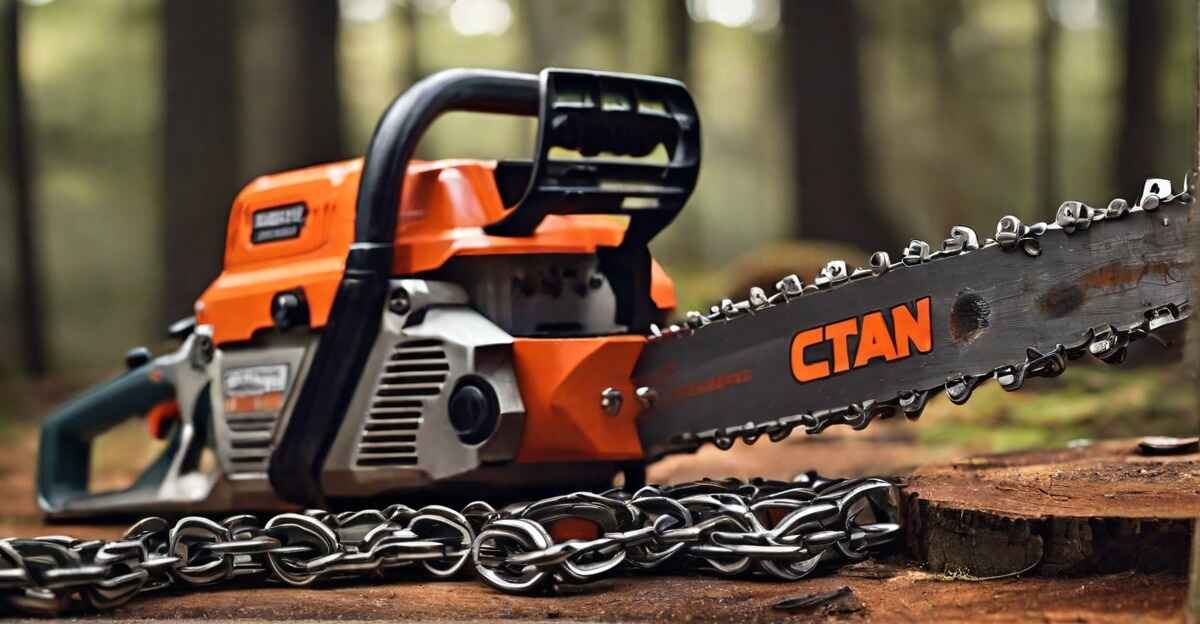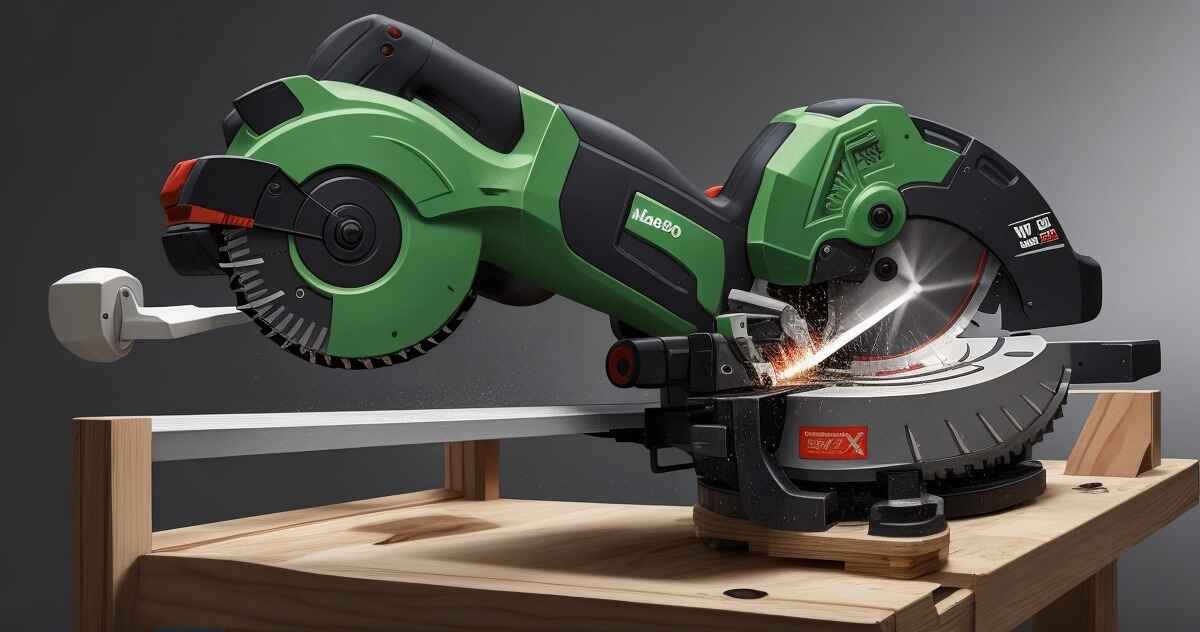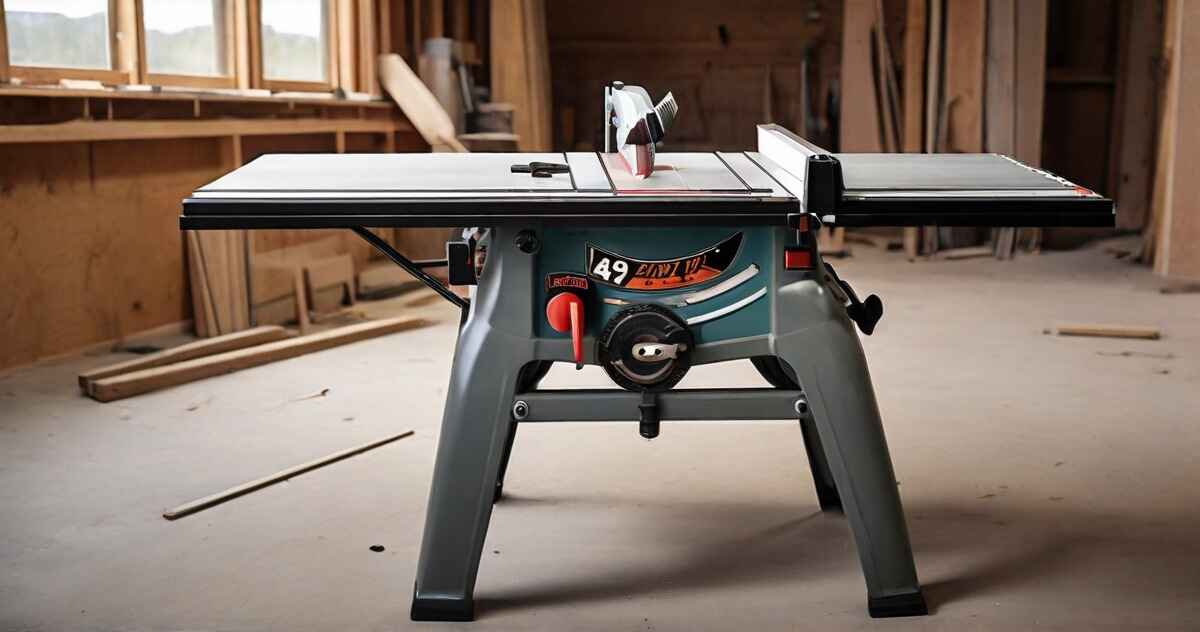Chainsaws are lumberjacks’ trusted steeds. Their sharp teeth can cut through even the toughest trees. These teeth dull with use, so you’ll need a sharpening file to refresh them. How long can you keep those chainsaw teeth alive before you have to replace the chain? Or how many times can you sharpen your chainsaw chain? Dive into this guide to discover the secrets of chainsaw chain longevity and keep your cutting machine purring like a champ.
The Anatomy of a Chainsaw Chain
Before we start sharpening, let’s look at the chain’s anatomy. Each link has a cutter and a raker tooth. A cutter tooth cuts with its chisel-like edge. Rather than burying the chain in the wood, the raker tooth controls the depth of each cut.
Chainsaw chains each play a crucial role in cutting. Keep these things running smoothly.
Cutter Tooth
Chains slice wood fibers when they’re in operation. Here’s what it looks like:
- Depth Gauge: This tells you how far the cutter tooth enters the wood. For efficient cutting, you need to keep the depth gauge set right.
- Depth Gauge Clearance: Gap between cutter top plate and depth gauge. It’s important to set this clearance right for safe, efficient cutting.
- Top Plate: Where the cutter tooth meets the wood. It cuts through wood fibers.
- Side Plate: During cutting, this plate guides the chain along the groove.
Raker Tooth (Depth Gauge Tooth)
Along with the cutter tooth, there’s a raker tooth. It controls how deep the cutter tooth goes. The key elements are:
- Depth Gauge Ridge: Between the raker and cutter teeth. This tells you how deep the cutter tooth can cut.
- Depth Gauge Setting: Distance between depth gauge ridge and cutter edge It’s important to keep this setting correct to reduce kickbacks.
- Filing or Maintenance: Maintaining raker teeth is essential to maintaining optimal cutting performance.
Link
Each link connects the cutter and raker teeth to form the chain. Links come in several types:
- Drive Links: Links that engage the drive sprocket and move the chain.
- Tie Straps: They connect the cutter and raker teeth. The teeth keep the chain stable, too.
- Rivet Joints: Rivets hold the links together. They keep the chain strong and intact.
It’s important to sharpen, tension, and take care of your chainsaw chain. Make sure these parts are in good shape so you can cut them safely and efficiently.
Factors Determining Sharpening Frequency
Chain Material
- Steel Chains: Steel chains are durable and can be sharpened five to ten times.
- Carbide Chains: Carbide chains sharpen three to five times because they’re hard.
Usage Conditions
- Frequency of Use: Heavy-duty use requires more sharpening than sporadic use.
- Wood Type: Hardwood cutting accelerates chain dulling more than softwood.
Maintenance Habits
- Lubrication: Regular lubing extends the chain’s sharpness by reducing friction and heat buildup.
- Tension Control: Tightening the chains minimizes premature wear, reducing sharpening.
Sharpening Techniques: File or Grinder?
There are two main methods for sharpening chainsaw chains:
- Filing: Traditional filing requires a file and a guide. Although it takes longer, it’s more precise and controlled.
- Grinding: Using grinding wheels works, but you have to keep the chain cool and prevent it from overheating.
The choice depends on your preference, experience, and the type of chain.
Sharpening Potential: Numbers and Nuances
How many times can you sharpen? It’s true, a chainsaw chain can get sharpened a lot, usually between 8 and 10. There’s no hard-and-fast rule here. There are several factors that influence this number, like:
- Chain quality: Premium chains last longer because they’re thicker. Chains on a budget might need replacing sooner.
- Sharpening technique: Maintain proper angles while removing the least amount of metal. The chain eats away faster with aggressive filing or the wrong angles.
- Cutting conditions: Dirty, sandy, and abrasive wood dulls teeth faster. It’s easy to lose teeth by hitting rocks or metal.
- Chain use: cutting and long sessions lead to more sharpening. Between sessions, you might be able to sharpen it several times.
Sharpening 101: Extending Your Chain’s Life
Make sure your chain lasts as long as possible by sharpening it.
- Use the right file: Make sure it fits your chain. Dull files remove too much metal, hastening chain failure.
- File consistently: Don’t wait until it’s really dull. By sharpening regularly, you preserve the chain’s profile and save time filing.
- Maintain proper angles: Make sure you sharpen at the same angle every time. Deflation ruins cutting efficiency and shortens chain life.
- File evenly: Use the same pressure on each tooth. A chain that’s unevenly sharpened wears out prematurely and vibrates.
- Don’t oversharpen: Too much filing removes metal, weakening the chain. File away a burr when it forms on the opposite side.
Signs Your Chain Needs Replacing:
Every chain eventually breaks. If you are ready to let go, here are some tips:
- Significant depth reduction: Rakers wear down over time, controlling chip depth. It’s time to replace them when they’re level with the cutters.
- Excessive filing effort: The chain is too thin to maintain a good edge if you need many strokes per tooth.
- Cracked or chipped teeth: They compromise structural integrity. Get a new chain right away.
- Increased vibration and difficulty cutting: Worn or dull chains make the engine work harder, leading to vibration.
FAQ:
Can I sharpen a chain indefinitely?
Eventually, the chain loses too much material and can’t hold an edge. When it gets this bad, you should replace it.
Is sharpening a chain cheaper than replacing it?
It’s cheaper to sharpen than to replace a chain. Be sure to factor in file costs and sharpening time before making a decision.
What happens if I don’t sharpen my chain?
Dull chains cut inefficiently, straining the engine, increasing vibration, and requiring more force. Engine wear, operator fatigue, and kickback can all result.
Can I sharpen a chain by hand?
Yes, you can sharpen by hand with the right tools (file, guide, and vice versa). But for beginners, a powered sharpener ensures consistent angles.
To maximize your chainsaw’s life, sharpen it regularly and use proper technique. You can keep your trusty tool biting into wood for many seasons by following these tips.
Conclusion
Proper chainsaw maintenance includes sharpening. Don’t forget to follow the manufacturer’s instructions. Keeping your chainsaw chain sharp will save you time and money. How many times can you sharpen your chainsaw chain? The article covers the ins and outs of chainsaw chain sharpening, along with an FAQ section. I hope you get the answer.




